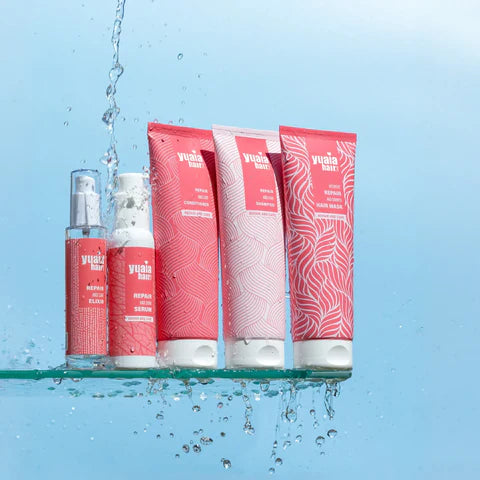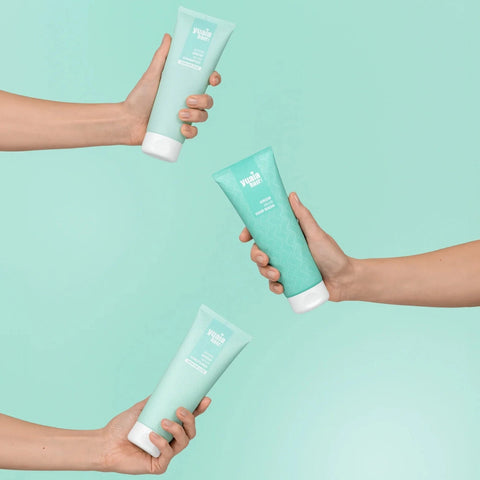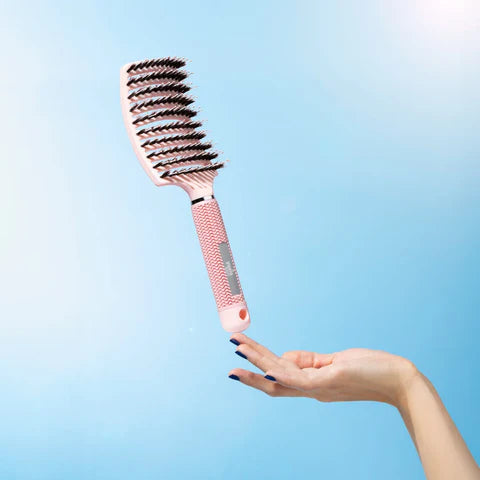

Lue Dorthe Kristensen
Kokoonpanon kampaaja ja entinen omistaja palkitun kampaajan zoomin zoomin kanssa
Dorthe on monien vuosien kokemus kampaamoteollisuudesta, ja se on neuvonut monia asiakkaita hiusten ja hiusten hoidosta. Dorthe on lukenut tämän blogin merkinnän korkealaatuisen ja ammattitaidon varmistamiseksi. Tämä blogiviesti päivitetään ammattimaisesti 13. heinäkuu 2025.
Sisällysluettelo
Understanding hair training
Hair training is a method where individuals gradually extend the time between washes with the aim of reducing the scalp's oil production. The theory behind this approach is that frequent washing strips the scalp of its natural oils, prompting it to produce more sebum to compensate. By washing less often, the scalp may adjust its oil production over time, leading to less oily hair.
The science of sebum production
Sebum, the natural oil produced by the scalp, plays a crucial role in maintaining hair health. Frequent washing can disrupt this balance by removing these essential oils, causing the scalp to overproduce sebum in response. This creates a cycle of oiliness that can be challenging to break. Understanding this mechanism is key to appreciating the potential benefits of hair training.
Practical steps to train your hair
Gradual wash reduction
To successfully train your hair, it's important to gradually increase the interval between washes. Start by adding an extra day between washes and slowly build up to longer periods. This allows your scalp to adjust without causing excessive oil buildup or irritation. Patience is essential, as the process can take several weeks to show noticeable results.
Supporting techniques
- Brushing to distribute oils: Regular brushing can help distribute natural oils from the scalp throughout the hair, reducing the appearance of oiliness. Using a boar bristle brush is particularly effective for this purpose.
- Using dry shampoo: Dry shampoo can be a valuable ally in managing oiliness between washes. It absorbs excess oil and adds volume, making hair appear fresher. Check out our dry shampoo for a convenient solution.
- Second-day hairstyles: Embrace hairstyles that are designed to work with your hair's natural oils. Updos, braids, or sleek ponytails can help conceal oiliness and make the transition phase more manageable.
Considerations and cautions
Potential challenges
While hair training can be beneficial, it's important to be aware of potential challenges. Some individuals may experience scalp irritation or feel uncomfortable with the initial increase in oiliness. It's crucial to listen to your scalp's needs and adjust your routine accordingly to avoid any adverse effects.
Individual differences
It's important to note that hair training results can vary widely based on individual factors such as genetics, hormones, and environmental influences. Each person's scalp is unique, and what works for one individual may not work for another. Personalizing your approach and being patient with the process is key.
Product recommendations for supporting hair training
For those embarking on the journey of hair training, selecting the right products is essential to support the process and maintain scalp health. One important choice is using a sulfate-free shampoo. Sulfates can strip the hair of its natural oils, leading to increased oil production as the scalp tries to compensate. At Yuaia Haircare, we offer the Grow and Glow Shampoo, which is sulfate-free and ideal for those looking to avoid overstimulation of oil production. This shampoo is gentle on the scalp and suitable for various hair types, helping to maintain a balanced oil level.
Another consideration is the use of natural oils to support scalp health. Ingredients like rosemary oil have been known to promote a healthy scalp environment, potentially aiding in the management of oiliness. At Yuaia Haircare, our Rosemary oil can be a beneficial addition to your hair care routine, providing nourishment without adding to the oiliness.
Frequently asked questions
Can everyone successfully train their hair to be less oily?
Results from hair training can vary significantly from person to person. Success depends on several factors, including genetics, hormone levels, and environmental conditions. While many people find that their hair becomes less oily over time, others may not experience the same degree of change. It's important to tailor your approach to suit your individual needs and be patient with the process.
How long does it take to see results from hair training?
The timeline for seeing results from hair training can differ widely. Some people may notice changes within a few weeks, while others might take a few months to see a noticeable reduction in oiliness. The key is to gradually extend the time between washes and monitor how your scalp responds over time.
Are there any risks associated with hair training?
Hair training is generally safe, but it's important to approach the process gradually to avoid potential issues like scalp irritation or excessive oil buildup. If you experience any discomfort or adverse effects, consider adjusting your routine or consulting a professional for advice.
What role do natural remedies play in managing oily hair?
Natural remedies can play a supportive role in managing oily hair. Ingredients like aloe vera and rosemary oil are known for their soothing and balancing properties, which can help maintain a healthy scalp environment. Incorporating these natural elements into your routine can complement the hair training process and enhance overall scalp health.
 2-5 päivän toimitus
2-5 päivän toimitus
 25 000+ tyytyväistä asiakasta
25 000+ tyytyväistä asiakasta
 Tyytyväisyystakuu
Tyytyväisyystakuu











